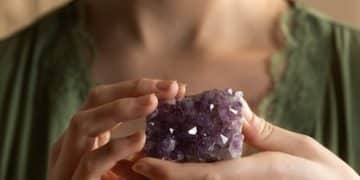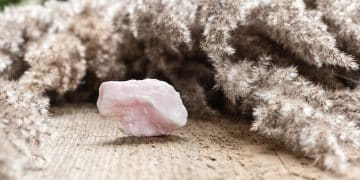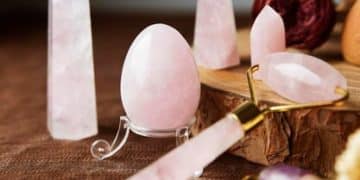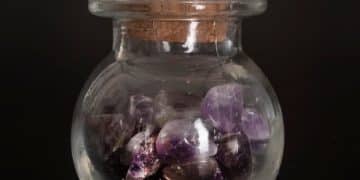Investing in Crystals: Your Guide to Authenticity and Value
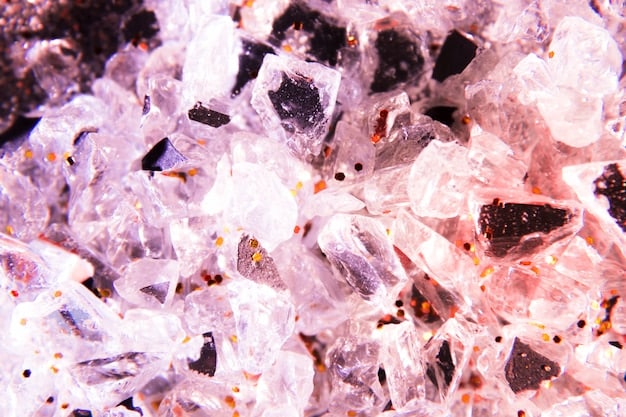
Investing in Crystals: A Guide to Identifying Authentic and High-Quality Stones involves understanding their properties, origins, and market value. Knowing how to differentiate genuine crystals from imitations is crucial for successful investment.
Are you fascinated by the world of crystals and considering turning your passion into a potential investment? Investing in Crystals: A Guide to Identifying Authentic and High-Quality Stones is essential for anyone looking to navigate this sparkling market. This guide will equip you with the knowledge to discern the real gems from the imitations.
Understanding the nuances of crystal authenticity and quality can transform your hobby into a profitable venture. Let’s explore the fascinating world of crystal investment and uncover the secrets to making informed decisions.
Investing in Crystals: An Overview
Investing in Crystals: A Guide to Identifying Authentic and High-Quality Stones requires a foundational understanding of what makes a crystal valuable. Several factors come into play, including rarity, aesthetic appeal, and metaphysical properties.
Let’s delve into these elements to begin your crystal investment journey!
Understanding Crystal Value
Crystal value is not solely determined by monetary factors. It encompasses a blend of geological scarcity and collectibility, making discernment crucial.
- Rarity: Rare crystals, like Tanzanite or Painite, naturally command higher prices due to their limited availability.
- Aesthetic Appeal: Crystals with unique formations, vibrant colors, and exceptional clarity are highly sought after by collectors.
- Metaphysical Properties: While not scientifically proven, certain crystals are believed to possess healing or energy-enhancing qualities, increasing their appeal in the metaphysical market.
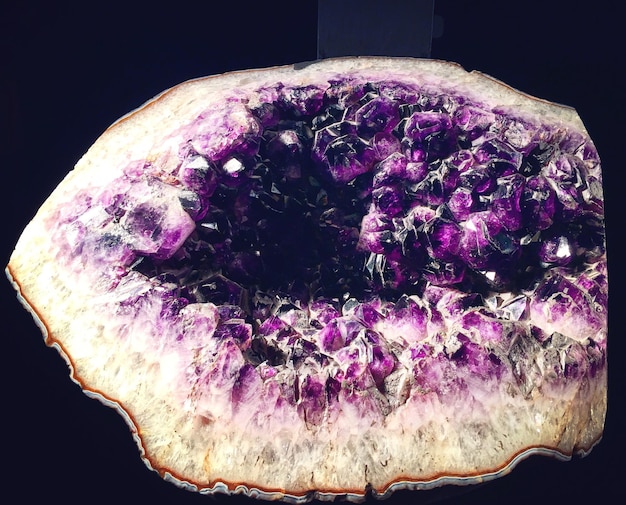
Grasping these factors will better inform your approach to understanding the value principles for Investing in Crystals: A Guide to Identifying Authentic and High-Quality Stones.
Identifying Authentic Crystals
One of the primary challenges in investing in Crystals: A Guide to Identifying Authentic and High-Quality Stones is distinguishing genuine crystals from fakes. Many imitation crystals flood the market, often made from glass or plastic.
Knowing the tests and characteristics to look for can save both novice and experienced collectors from costly mistakes.
Simple Tests for Authenticity
Several tests can help you verify the authenticity of a crystal. These don’t require specialized equipment and can be done at home or in a store.
- Hardness Test: Real crystals are typically harder than glass or plastic. You can try scratching the crystal with a knife. If it scratches easily, it is likely a fake.
- Temperature Test: Crystals remain cool to the touch even in warm environments, whereas glass or plastic will quickly warm up.
- Inclusion Check: Natural crystals often contain inclusions (small imperfections) that are rare in mass-produced fakes. These small imperfections can actually add character and value to certain types of crystals, contrary to what you might expect.
Using these simple tests can further assist in investing in Crystals: A Guide to Identifying Authentic and High-Quality Stones.
Assessing Crystal Quality
Beyond authenticity, the quality of a crystal significantly impacts its value. Factors such as clarity, cut, color saturation, and size all play crucial roles.
Let’s examine what to look for to evaluate a crystal’s quality like a seasoned expert.
Key Quality Factors
Understanding key quality factors is essential for valuing your crystal investments effectively. Keep these elements in mind when evaluating individual specimens.
- Clarity: High-quality crystals should have minimal inclusions and internal flaws. The clearer the crystal, the more light it can refract, enhancing its sparkle.
- Cut: For faceted crystals, the precision and symmetry of the cut are vital. A well-cut crystal maximizes light reflection and brilliance.
- Color Saturation: Vibrant, evenly distributed colors are generally preferred. Deep hues in stones like amethyst or emeralds can greatly increase their market price.
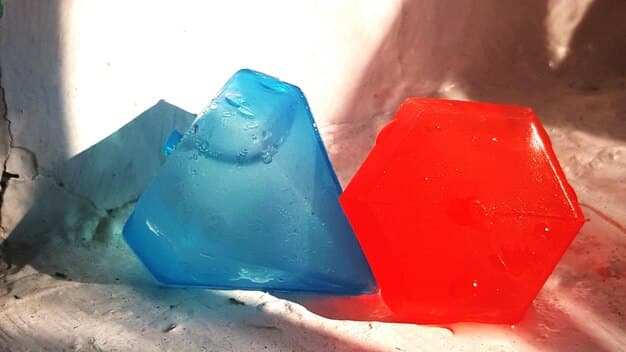
Considering these factors aids in investing in Crystals: A Guide to Identifying Authentic and High-Quality Stones.
Building a Crystal Investment Portfolio
Creating a crystal investment portfolio involves strategic planning and diversified collecting. It’s not about hoarding every shiny stone you find; rather, you need to focus on acquiring pieces that complement each other and have long-term potential.
Here’s how to curate a collection that stands the test of time.
Diversification and Research
A balanced crystal portfolio should include a variety of crystal types, origins, and properties. This approach minimizes risk and maximizes potential returns.
- Research Market Trends: Stay updated on current crystal trends and demand. Online forums, crystal auctions, and gem trade shows are excellent sources of information.
- Diversify Your Collection: Include rare stones, popular healing crystals, and aesthetically unique specimens. A mix of investment types balances risk.
- Consult Experts: Seek advice from reputable gemologists or experienced crystal collectors. Their insights can help you avoid costly mistakes.
These methods help in smartly investing in Crystals: A Guide to Identifying Authentic and High-Quality Stones and growing your investment portfolio.
Sourcing and Caring for Your Crystals
Where you source your crystals and how you care for them plays a significant role in their long-term value. Proper handling and storage can prevent damage and maintain their aesthetic appeal.
Let’s discuss the best practices for sourcing and maintaining your crystal investments
Ethical Sourcing and Maintenance
Prioritize ethical sourcing to ensure your investments align with responsible practices. Clean your crystals regularly to maintain their natural brilliance.
- Reputable Dealers: Purchase crystals from certified dealers with transparent sourcing practices.
- Gentle Cleaning: Clean crystals with a soft brush and mild soap. Avoid harsh cleaning agents that can damage their surfaces.
- Proper Storage: Store crystals in a cool, dry place away from direct sunlight. Use padded cases or boxes to protect delicate specimens from scratches and impacts.
Adhering to these practices can support your plan for investing in Crystals: A Guide to Identifying Authentic and High-Quality Stones.
The Future of Crystal Investing
As interest in holistic wellness and alternative therapies grows, so does the demand for crystals. This trend indicates a positive outlook for crystal investments.
Let’s explore other forces shaping the crystal markets future:
Emerging Trends
Keep an eye on future trends that can impact crystal investments. Changes to consumer preferences and cultural factors are among these.
- Online Marketplaces: E-commerce platforms are making crystals more accessible to a global audience, expanding potential market reach.
- Social Media Influence: Platforms like Instagram and Pinterest significantly influence crystal trends and popularity.
- Sustainability and Ethics: Consumers are increasingly concerned about ethical sourcing, driving demand for sustainably mined crystals.
By paying attention to these developments, you can make knowledgeable investment choices when investing in Crystals: A Guide to Identifying Authentic and High-Quality Stones.
| Key Aspect | Brief Description |
|---|---|
| 💎 Authenticity | Verify crystals with hardness, temperature, and inclusion tests. |
| ✨ Quality | Assess clarity, cut, and color saturation for higher value. |
| 🌱 Sourcing | Buy from reputable dealers with ethical practices. |
| 📈 Portfolio | Diversify with rare,healing, and unique crystals. |
Frequently Asked Questions
Rare crystals like Tanzanite and Painite are good investments. Amethyst, quartz, and rose quartz are also popular due to their aesthetic and metaphysical properties, making investing in Crystals: A Guide to Identifying Authentic and High-Quality Stones more accessible.
Fake crystals are often made from glass or plastic. You can test authenticity using hardness, temperature, and inclusion checks.
High-quality crystals have good clarity, color saturation, and minimal inclusions. The cut, if applicable, should be symmetrical to maximize light reflection, an important consideration when investing in Crystals: A Guide to Identifying Authentic and High-Quality Stones.
Yes, cleaning helps maintain a crystal’s brilliance and appearance. Use a soft brush and mild soap for gentle cleaning.
Crystal investments can be profitable if you research market trends and ethical sourcing. Diversifying your collection and consulting with gemologists can further improve chances of success in investing in Crystals: A Guide to Identifying Authentic and High-Quality Stones.
Conclusion
Ultimately, knowledge is your most powerful resource when investing in Crystals: A Guide to Identifying Authentic and High-Quality Stones. By mastering crystal authentication, evaluating quality, and keeping an eye on future trends, you can build a stunning and valuable crystal portfolio.
Happy collecting, and may your crystal investments bring both beauty and prosperity to your life!

